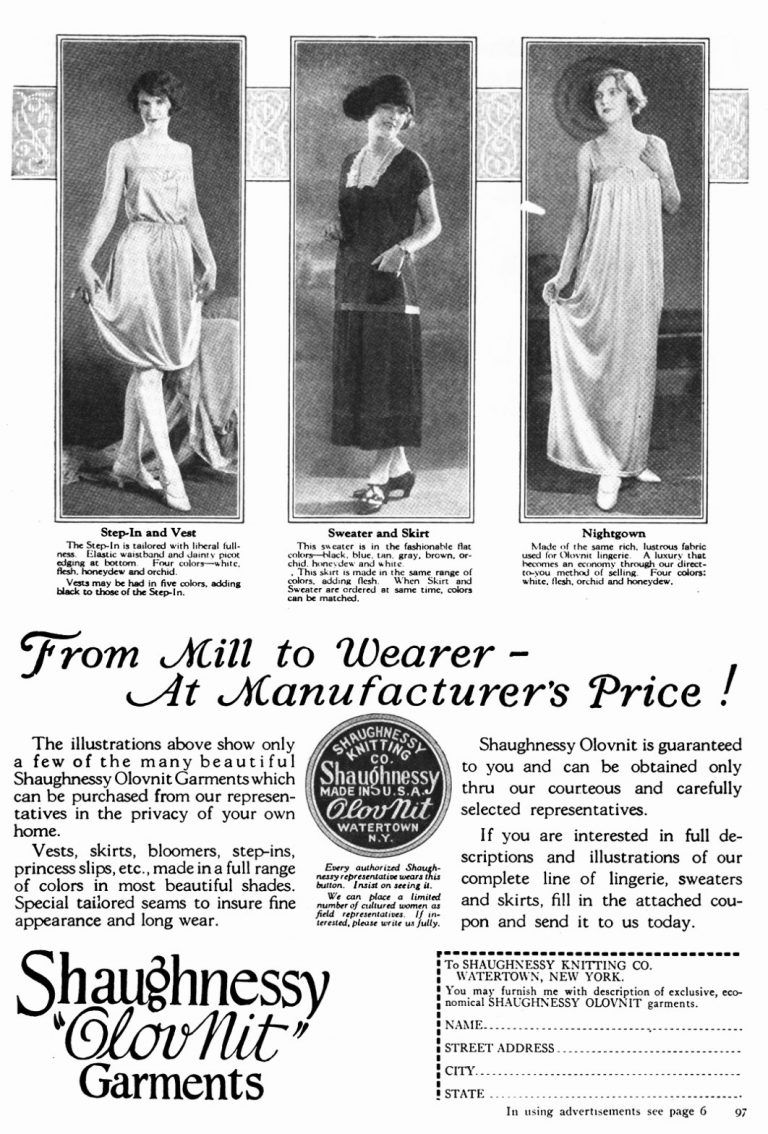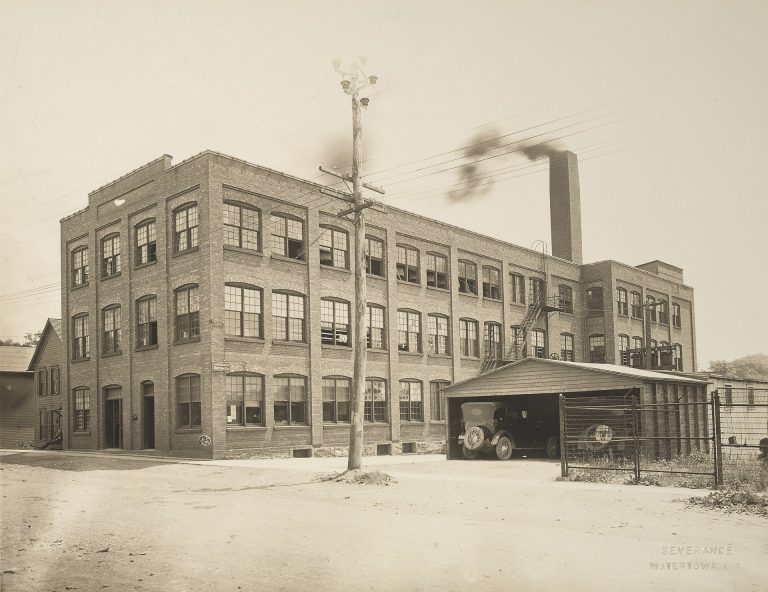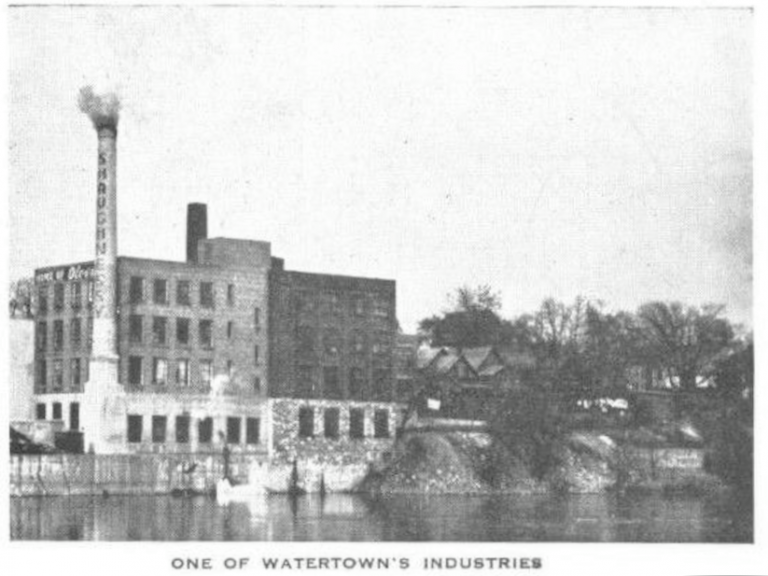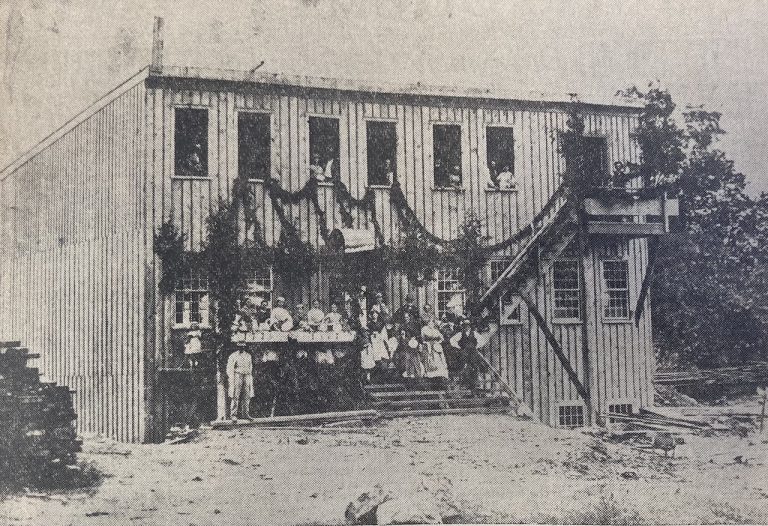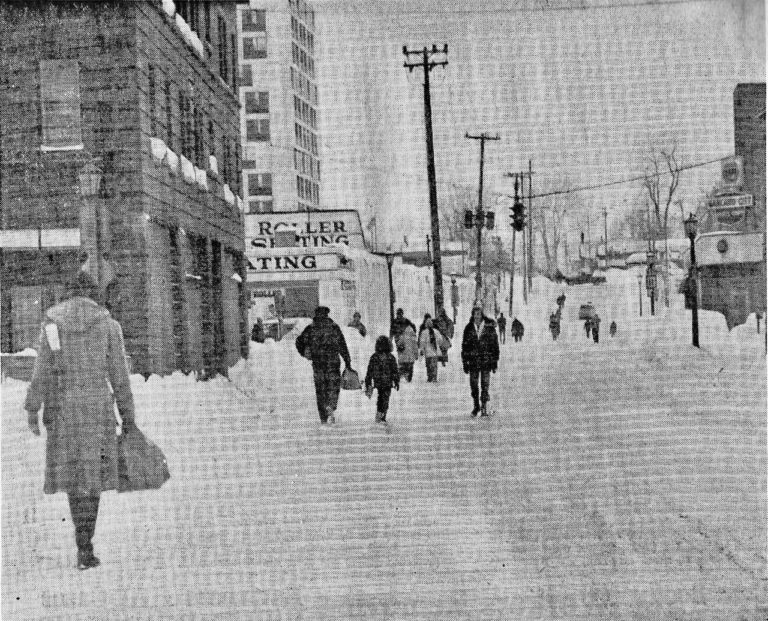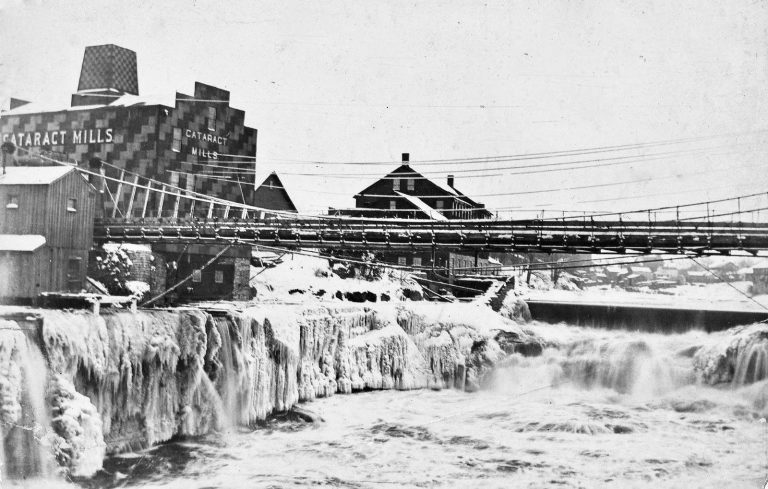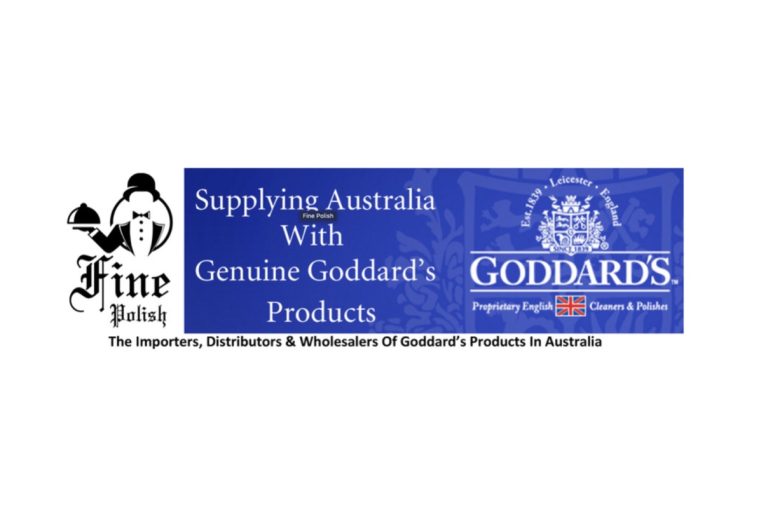Watertown Chamber of Commerce Lures Shaughnessy Knitting Mill To City in 1909
According to a news brief in Fibre & Fabric printed in 1909, the Shaughnessy Knitting Mill located in Amsterdam, N.Y., accepted a proposition made by the Watertown Chamber of Commerce to move their plant to Northern New York. The company would work temporarily in the Wise Industrial Building on Moulton Street with 6,500 available square feet of floor space, with the *Watertown Light and Power Co. donating land elsewhere on Moulton Street for the later construction of a new mill. (*It would later be printed in the Watertown Daily Times that the Shaughnessy Knitting Mill purchased the property.)
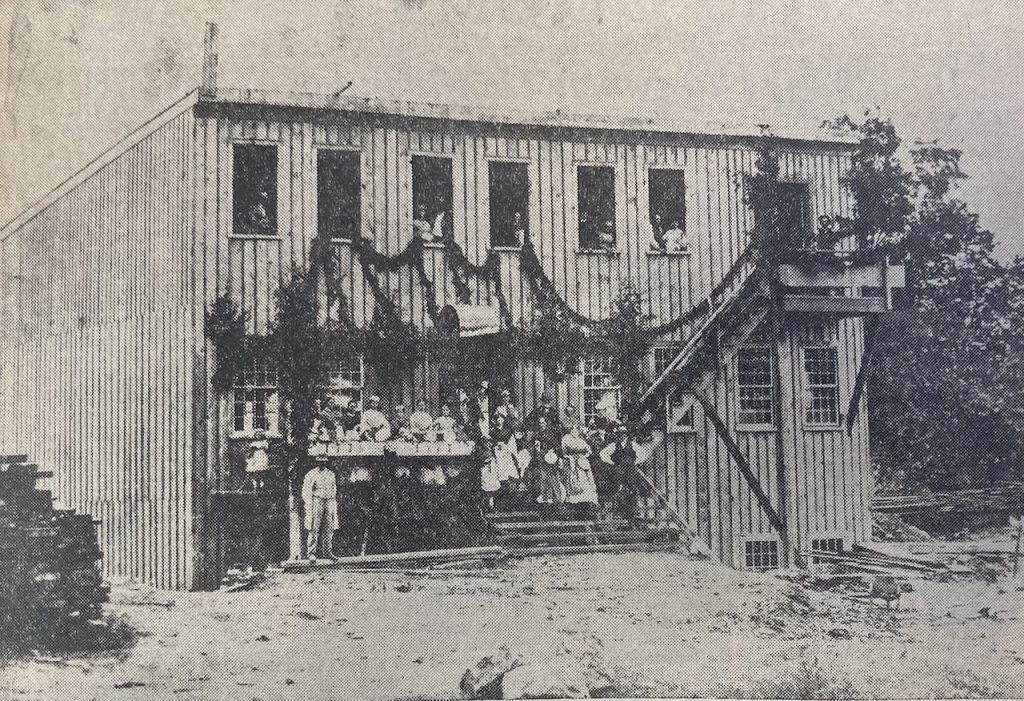
The business, headed by Martin J. Shaughnessy, would be chartered in September of 1909 with capital stock worth $40,000. The location ultimately chosen for the new construction would be about where the Gleason & Earle Splint Mill on the bank of the Black River on Moulton Street was previously located. The Splint Mill opened on July 4, 1867, allowing wooden splints to be dipped and packaged for old-style sulfur matches.
Plans for the new Shaughnessy Knitting Mill were drawn up in 1910, with the expected construction of the $20,000 building to be completed in 1911. The operation would seek to employ 600 to 700 girls, making it one of Watertown’s largest employers. The Watertown Daily Times reported on August 15, 1910–
According to the plans, which are the original ones prepared when the company first came to Watertown, the building will be a three-story structure, 150 by 50 feet. Enough machines will be installed so that when operating at full capacity, 1,000 dozen of knit underwear will be turned out daily.
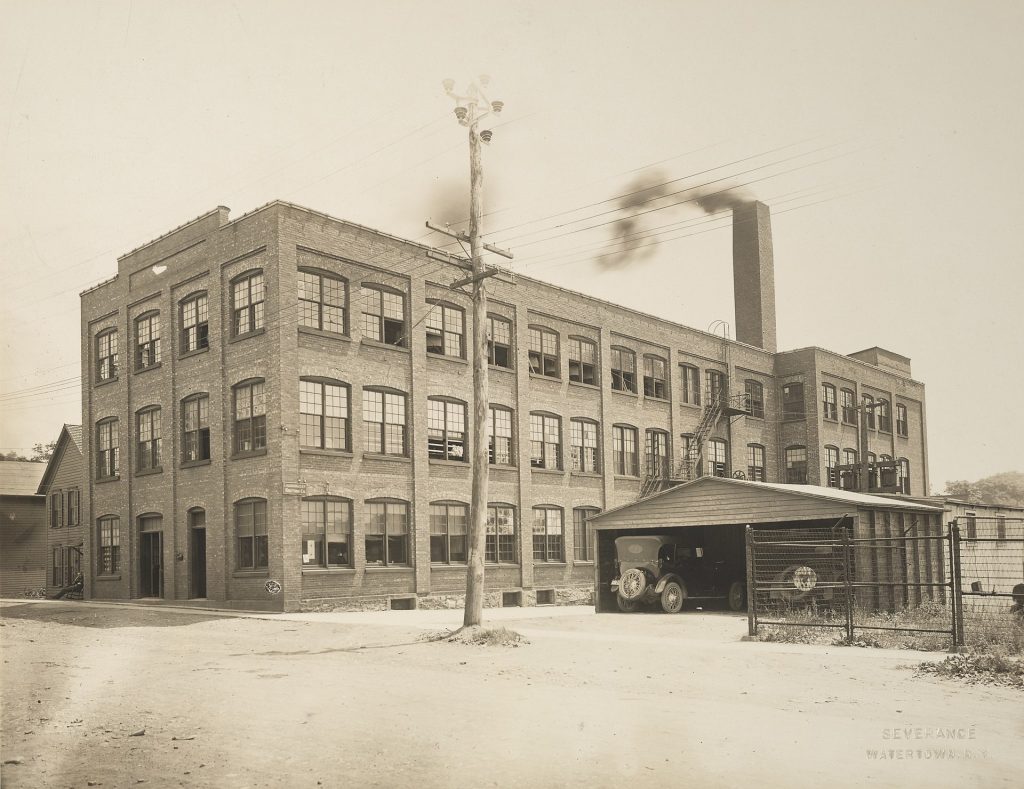
As construction started on the new facility in early 1911, the Shaughnessy Knitting Mill wasted no time making contributions to the community. In this particular case, aside from a cash donation, the management gifted the St. Patrick’s Children’s Home on Coffeen Street 350 knit drawers and 139 knit shirts. It would be one of the first in a long, local career for Martin Shaughnessy’s charity work with churches – something he would be commended for with the highest of praises in his later years.
Business would pick up over the first couple of years for the Shaughnessy Knitting Mill. On August 5, 1914, it was speculated in the Daily Times that it might benefit from the outbreak of WWI in Europe–
Another Watertown industry that will derive benefit from the European trouble will be the Shaughnessy Knitting Mill. An immense amount of knit underwear is imported from Germany, particularly in the cheaper grades. The same conditions arise here as do in the paper industry. With the supply from Europe cut off, the jobbers turn to the local manufacturers to supply the demand, and increased production will be the result.

After being shut down for a week in 1914, the knitting mill would start production again, running four days a week due to a saturation in the market. Fortunately, foreign demand was high, and the surplus would be purchased. The Watertown Daily Times on November 24, 1914, would report—
The local mill has been very fortunate in retaining a good market for its product. All summer the knitting was carried on night and day and the business of the mill for the most part has been above the average of that of many knitting mills. But the European war has begun to affect some of the mills in general, but indications at the present are that business will be stimulated through a greater demand from foreign countries.
Torchon lace, used on the women’s underwear manufactured by the Shaughnessy mill, which comprises about one half of the output of the mill, is imported from England, and though orders for this material have been sent from this city, it is impossible to tell just when they will be filled.

In March of the following year, the Shaughnessy Knitting Mill would run night and day with orders coming in constantly, Martin Shaughnessy stated that the orders at the current time were outpacing those of a year ago.
Mr. Shaughnessy’s son, Martin W., a manager at the mill, would narrowly escape death a year later when the car he was driving was struck by a freight train on the Mill Street crossing. Upon coming to the tracks, he noted no signal or lantern to inform him to wait for an oncoming train and eased the vehicle over the tracks. As his vehicle reached the middle, it was broadsided by the train, which proceeded to push it 15 feet before coming to a stop.
The flagman on duty at the crossing refused to comment on the incident, but Mr. Shaughnessy said he had witnesses who would swear that the flagman was on the sidewalk waving his lantern instead of the road (the accident occurred just shy of 6 pm five days before Christmas.)
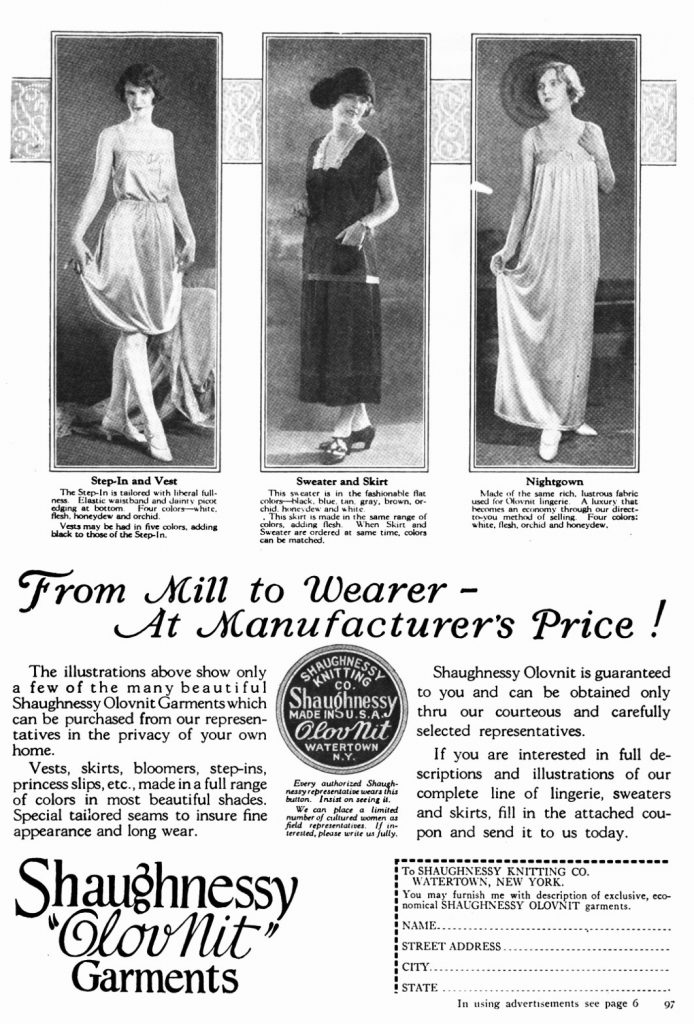
In January of 1930, knitting at the Shaughnessy Knitting Mill would be suspended as all knitting machinery was transferred to the Oswego plant. Mr. Shaughnessy would tell the Watertown Daily Times, “We do not intend leaving Watertown, however, we discovered that our lingerie products could be knitted to better advantage in our out-of-town plants. At present there are about 100 girls working in the mill here.”
In 1938, Martin J. Shaughnessy and his wife, Mira Widdowson Shaughnessy, received Pontifical Honors from the Pope. Martin, Knights of the Order of St. Gregory The Great, civil Class, and Myra, Silver Cross Pro Ecclesia Et Pontifice, both having long, active involvement with Holy Family Church in Watertown.
Mr. Shaughnessy passed away at the age of 82 in April of 1950. He was predeceased by his son, Martin W., Vice President and Sales Manager, who died in 1934 at the age of 41, and wife, Mira, who passed away in 1945. Mr. Shaughnessy was buried in full ceremonial costume of Knight of the Order of St. Gregory The Great, while a delegation of pupils from Holy Family Parochial School attended the funeral with a very large contingency of visiting priests from throughout the entire state.

Shaughnessy Knitting Mills would continue under Martin’s son, John Shaughnessy Jr., in a variety of roles until it ceased operations in 1962 with him as president and treasurer. At its peak in the 1920s, the company had mills in Boston and Philadelphia and offices in nearly 200 cities.
The facility would later be used by the Taggart Paper Company for a period of time before being purchased by a private entity in 1980, and shortly thereafter, its roof collapsed. Four years later, it was declared an extremely hazardous firetrap in 1984.
In 1987, the former Shaughnessy Knitting Mill was condemned, and in 1989, the owner attempted to illegally demolish it, resulting in an injury and hospitalization. The city would finish the demolition, then city engineer Michael J. Sligar told the Watertown Daily Times, “You’ve got 40 feet of unsupported walls — incredibly unsafe. It was the first time we’ve posted a guard at a building to keep people away.”
